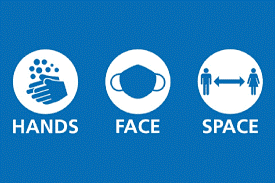
The Office for National Statistics (ONS) has just released figures looking at the mortality rate from COVID-19 across various occupations.
According to calculations on death rates from COVID-19 in the UK workforce it has peaked in manual workers in processing plants, security guards, care workers and construction. Which the ONS refer to as ‘elementary occupations’.
The ONS have nine broad occupational categories which are listed below.
- Major Group 1: MANAGERS, DIRECTORS AND SENIOR OFFICIALS
- Major Group 2: PROFESSIONAL OCCUPATIONS
- Major Group 3: ASSOCIATE PROFESSIONAL AND TECHNICAL OCCUPATIONS
- Major Group 4: ADMINISTRATIVE AND SECRETARIAL OCCUPATIONS
- Major Group 5: SKILLED TRADES OCCUPATIONS
- Major Group 6: CARING, LEISURE AND OTHER SERVICE OCCUPATIONS
- Major Group 7: SALES AND CUSTOMER SERVICE OCCUPATIONS
- Major Group 8: PROCESS, PLANT AND MACHINE OPERATIVES
- Major Group 9: ELEMENTARY OCCUPATIONS
The ONS figures for 7th March 2020 to 28th December 2020 are showing that men in six out of nine broad occupational categories experienced a ‘statistically significant’ rate of fatal cases compared to the working population as a whole.
Men account for nearly two thirds of the deaths from COVID
Overall, there were 7961 registered in England and Wales between 9 March and 28 December 2020 following a positive COVID test. But interestingly; 5128 of these were men and 2833 women.
That relates to a rate of 31.5 deaths per 100,000 for working age men, and 16.8 deaths per 100,000 working-age women.
COVID deaths in Medical staff
Unsurprisingly, nursing staff, doctors and healthcare workers also died of COVID-19 at rates above that of the general working population: But again men in healthcare occupations saw 44.9 deaths per 100,000 (190 cases). The rate among women in healthcare occupations (at 17.3 deaths per 100,000 and 224 deaths) was statistically similar to the rate in the population.
It was also noted that, when you look at nurses specifically, there was a higher rate with 79.1 deaths per 100,000 men, and 24.5 deaths per 100,000 females; nursing auxiliaries and assistants also had an elevated mortality rate.
Teachers at no greater risk than rest of the workforce
The ONS found that teaching and education professionals were not at higher risk of dying from COVID-19 than the rest of the workforce, with 139 deaths recorded between March and December (73 female and 66 male.)
This equates to 18.4 deaths per 100,000 men and 9.8 deaths per 100,000 women, or a rate lower than the average for the working age population.
Working near others puts you at greater risk.
The ONS has pointed out that employees working too close to others appears to raise the risk of catching and dying from COVID 19 above that of the rest of the working population. The ONS doesn’t however single out any particular occupation over others. But what it does say is the sector worst-affected by COVID-19 mortality was elementary occupations, where there were 66.3 COVID-19 related deaths per 100,000 men (699 deaths); for women the figure was 21.1 deaths per 100,000, with 227 deaths.
The highest number of death certificates were for ‘elementary process plant workers’, performing manual work in processing or manufacturing businesses. This sub-category recorded 143.2 deaths per 100,000 male workers (120 deaths), or roughly five times the all-sector average for men; women in these roles also had a mortality rate double the background average, at 33.7 deaths per 100,000, or 57 deaths.
The figures for the construction sector were also raised: ‘elementary construction occupations’ saw 82.1 deaths per 100,000 men, with 70 deaths.
Security guards and related occupations had the next highest rate of death, with 140 deaths, representing 100.7 deaths for every 100,000 men in such jobs – roughly three times the all-worker average for men.
Caring, leisure and other service occupations was the next category with a high COVID mortality rate, at 64.1 deaths per 100,000 men and 27.3 deaths per 100,000 women.
Within this category, mortality peaked among care home workers and those who provide personal care in people’s homes: there were 109.9 deaths per 100,000 males and 47.1 deaths per 100,000 females – a level three times the average for women in the workforce.
Other categories with statistically high COVID-19 mortality were process, plant and machine operatives (52.8 deaths per 100,000 males; 827 deaths); skilled trades occupations (40.4 deaths per 100,000 males; 848 deaths).
Male bus and coach drivers saw 70.3 deaths per 100,000, with 83 deaths.
The data highlighted that men in administrative, office-based roles sales – a category that includes civil servants working for national and local government, and government agencies – died more often than peers in the working population, along with male colleagues in customer service roles.
Men in administrative or supervisory roles died at a rate of 39.0 per 100,000, with 186 deaths; within this category, local government workers saw 72.1 deaths per 100,000 men; those in customer service roles, 40.3 died per 100,000 died, or 156 individuals.
The mortality rate for women in office-based sales and customer service roles, also likely to include call centre staff, only avoided being in the “statistically significant” category due to the confidence intervals applied to the data.
The government recently announced it is asking councils to target key workers for regular COVID tests.
So the message to take home out of this is quite simply that, COVID 19 is a serious condition that kills and, even though you may have received your vaccination jabs, you will not be at a low risk until the majority of people have been fully vaccinated. Until then you really must follow the guidance, especially at work, of:

As ever, if you have a subject that you would like us to cover one week, please contact us by phone 01458 253682, email or via our Facebook page or by Twitter
